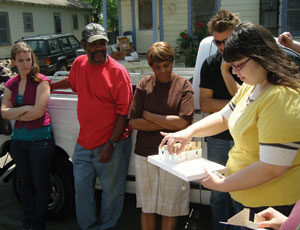Though green-building experts and construction lawyers laud the good intentions of the U.S. Green Building Council about its popular Leadership in Energy and Environmental Design green-building rating system, many have serious concerns about at least one new requirement in the latest version of LEED, which went into effect on July 1. The requirement, a “precondition” of certification for all buildings under LEED Version 3, says owners must commit to sharing building energy and water-usage data for at least five years after a new building is occupied or an existing building is certified. Another change sending shudders down the spine of construction lawyers and others is that LEED certification may be revoked if there is noncompliance with this new “minimum program requirement” or any of the other six so-called MPRs.

The energy-use reporting requirement applies to the particular project’s type of certification. For example, if a project is seeking certification for new construction, the requirement applies to the entire building. If a project is seeking certification for core and shell, the requirement applies only to energy data for the core and shell. The same goes for commercial interiors.
USGBC plans to use the performance data, which it promises to keep confidential, to compare proposed and metered energy performance sd well as performance of different LEED-rated buildings and interiors.
“We are taking the concept of green building and making sure it is real,” says Scot Horst, USGBC’s senior vice president for LEED. “Whether or not LEED-rated buildings are really performing is an extremely important issue for us,” he adds.
Under LEED 2009, sharing energy and water-usage data includes supplying information on a regular basis in a free, accessible and secure online tool or, if necessary, taking any action to authorize the collection of information directly from service or utility providers. The commitment to supply data must carry forward if the building or space changes ownership or lessee.
The “bottom line” is, these conditions “may end up doing more harm than good for the future vitality” of LEED, says attorney Edward B. Gentilcore, a partner of Duane Morris LLP, Pittsburgh. “This would be a significant loss in light of the accomplishments to date,” he adds.
Owners weighing whether to pursue a LEED-rated project will have to consider the potential that the achievement of the rating may be a Pyrrhic victory because decertification may be the ultimate legacy, says Gentilcore.
Construction lawyer Ujjval Vyas, a principal with Alberti Group LLC, Chicago, has more concerns. Any third party has the right to initiate noncompliance action by USGBC for any of the MPRs, he says. “This creates a huge risk and provides standing to any entity whatsoever to injure a building owner or tenant,” Vyas says.
Both lawyers say the requirement creates a difficult policing obligation of landlords in relation to their tenants or...


Post a comment to this article
Report Abusive Comment